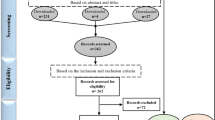Abstract
Predicting influent flow is important in the management of a wastewater treatment plant (WWTP). Because influent flow includes municipal sewage and rainfall runoff, it exhibits nonlinear spatial and temporal behavior and therefore makes it difficult to model. In this paper, a neural network approach is used to predict influent flow in the WWTP. The model inputs include historical influent data collected at a local WWTP, rainfall data and radar reflectivity data collected by the local weather station. A static multi-layer perceptron neural network performs well for the current time prediction but a time lag occurs and increases with the time horizon. A dynamic neural network with an online corrector is proposed to solve the time lag problem and increase the prediction accuracy for longer time horizons. The computational results show that the proposed neural network accurately predicts the influent flow for time horizons up to 300 min.













Similar content being viewed by others
References
Bechmann H, Nielsen MK, Madsen H, Poulsen NK (1999) Grey-box modeling of pollutant loads from a sewer system. Urban Water 1:71–78
Beraud B, Steyer JP et al (2007) Model-based generation of continuous influent data from daily mean measurements available at industrial scale. In: Proceedings 3rd international IWA conference on automation in water quality monitoring, September 5–7, Gent, Belgium
Carstensen J, Nielsen MK, Strandbæk H (1998) Prediction of hydraulic load for urban storm control of a municipal WWT plant. Water Sci Technol 37:363–370
Chiang YM, Chang LC, Tsai MJ, Wang YF, Chang FJ (2010) Dynamic neural networks for real-time water level predictions of sewerage systems-covering gauged and ungauged sites. Hydrol Earth Syst Sci 7:2317–2345
Djebbar Y, Kadota PT (1998) Estimating sanitary flows using neural networks. Water Sci Technol 38:215–222
Gernaey KV, Rosen C, Benedetti L, Jeppsson U (2005) Phenomenological modeling of wastewater treatment plant influent disturbance scenarios. In: Proceedings 10th international conference on urban drainage (10ICUD), August 21–26, Copenhagen, Denmark
Gernaey KV, Rosen C, Jeppsson U (2010) BSM2: a model for dynamic influent data generation, Technical Report, No. 8, IWA Task Group on Benchmarking of Control Strategies for Wastewater Treatment Plants
Gurney K (1997) An introduction to neural networks. CRC, London
Hernebring C, Jonsson LE, Thoren UB, Moller A (2002) Dynamic online sewer modeling in Helsingborg. Water Sci Technol 45:429–436
Hussain AJ, Jumeily DA, Lisboa P (2009) Time series prediction using dynamic ridge polynomial neural networks. In: Second international conference on developments in eSystems Engineering, pp. 354–363, Abu Dhabi, December 14–16
Keyser WD, Gevaert V et al (2010) An emission time series generator for pollutant release modeling in urban areas. Environ Model Softw 25:554–561
Kim JR, Ko JH et al (2006) Forecasting influent flow rate and composition with occasional data for supervisory management system by time series model. Water Sci Technol 53:185–192
Kurz GE, Ward B, Ballard GA (2009) Simple method for estimating I/I using treatment plant flow monitoring reports—a self help tool for operators. In: Proceedings of the water environment federation, collection systems, vol 9, pp. 568–576
Kusiak A, Wei X (2012) A data-driven model for maximization of methane production in a wastewater treatment plant. Water Sci Technol 65:1116–1122
Kusiak A, Wei X, Verma A, Roz E (2013) Modeling and prediction of rainfall using radar reflectivity data: a data-mining approach. IEEE Trans Geosci Remote Sens 51:2337–2342
Paleologos EK, Skitzi I, Katsifarakis K, Darivianakis N (2013) Neural network simulation of spring flow in Karst environments. Stoch Environ Res Risk Assess 27:1829–1837
Pons MN, Lourenco MC, Bradford J (1998) Modeling of wastewater treatment influent for WWTP benchmarks. In: Proceedings 10th IWA conference on conference on instrumentation, control and automation, June 14–17, Cairns, Australia
Qasim SR (1998) Wastewater treatment plants: planning, design, and operation. CRC, Boca Raton
Saini LM (2002) Artificial neural network based peak load forecasting using Levenberg–Marquardt and quasi-Newton methods. IEE Proc Gener Transm Distrib 149:578–584
Shaw AM, Doyle FJ III, Schwaber JS (1997) A dynamic neural network approach to nonlinear process modeling. Comput Chem Eng 21:371–385
Singh P, Borah B (2013) Indian summer monsoon rainfall prediction using artificial neural network. Stoch Environ Res Risk Assess 27:1585–1599
Velasquez JD, Rios SA, Howlett RJ, Jain LC (2009) Knowledge-based and intelligent information and engineering systems. Springer, Germany
Verma A, Wei X, Kusiak A (2013) Predicting the total suspended solids in wastewater: a data-mining approach. Eng Appl Artif Intell 26:1366–1372
Vesillind PA (2003) Wastewater treatment plant design. IWA, Alexandria
Wei X, Kusiak A, Rahil H (2013) Prediction of influent flow rate: a data-mining approach. J Energy Eng 139:118–123
Wu JD, Li N, Yang HJ, Li CH (2008) Risk evaluation of heavy snow disasters using BP artificial neural network: the case of Xilingol in Inner Mongolia. Stoch Environ Res Risk Assess 22:719–725
Acknowledgments
This research was supported by funding from the Iowa Energy Center Grant No. 10-1.
Author information
Authors and Affiliations
Corresponding author
Rights and permissions
About this article
Cite this article
Wei, X., Kusiak, A. Short-term prediction of influent flow in wastewater treatment plant. Stoch Environ Res Risk Assess 29, 241–249 (2015). https://doi.org/10.1007/s00477-014-0889-0
Published:
Issue Date:
DOI: https://doi.org/10.1007/s00477-014-0889-0




